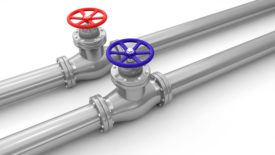Ray Wohlfarth
Ray Wohlfarth’s talks about the installation, maintenance and repair of commercial boilers.
ARTICLES
Boiler Room | Ray Wohlfarth
Thinking outside the box.
Read More
BOILER ROOM
Ray Wohlfarth: Installing a trouble-free condensing boiler
A high-efficiency boiler replacement requires additional planning.
April 8, 2022
Ray Wohlfarth: The importance of safety in mechanical rooms
Common hazards seen inside of mechanical rooms.
December 9, 2021
Ray Wohlfarth: Tips for high-efficiency boiler replacement
What could happen? Costly callbacks.
January 4, 2021
Ray Wohlfarth: Troubleshooting hydronic systems
Piping layout in hydronic systems is often confusing.
August 3, 2020
Ray Wohlfarth: Boiler room detective
“The game is afoot.” Have fun, detective.
February 27, 2020
Ray Wohlfarth: Consider a hydronic heating system
Here is some food for thought.
January 28, 2020
Ray Wohlfarth: The case for 2 psig
What is the proper pressure setting for a comfort-heating steam boiler?
July 12, 2019
Keep the info flowing with our eNewsletters!
Get the latest industry updates tailored your way.
JOIN TODAY!Copyright ©2024. All Rights Reserved BNP Media.
Design, CMS, Hosting & Web Development :: ePublishing





